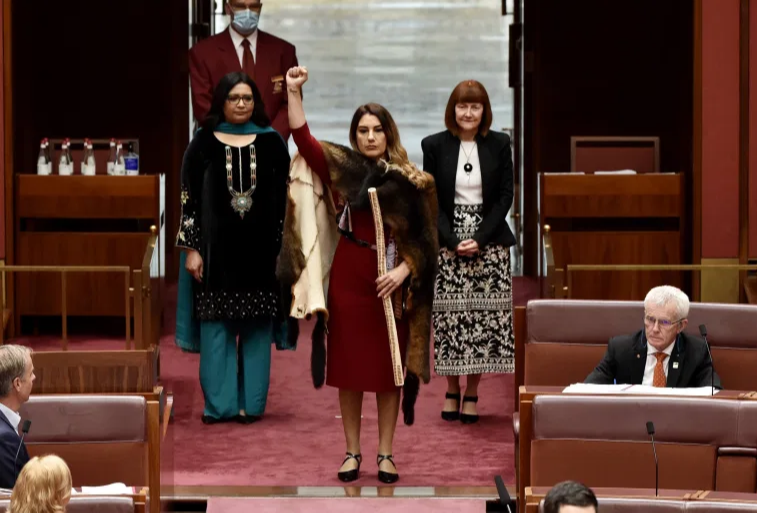
Draped in a possum-skin cloak, Senator Thorpe entered the Australian Federal parliament for the first time last September [File: Photo from Thorpe's office]
Melbourne, February 14 (RHC)-- Draped in a possum-skin cloak Senator Lidia Thorpe entered her first day in the Australian Federal parliament last September with her right fist raised in a Black Power salute. In her left hand, she carried a stick engraved with 441 stripes representing the number of Indigenous people to die in custody since a landmark Royal Commission in 1991.
Thorpe tells reporters she raised her fist “as a sign of resistance and as a sign of our struggle and in solidarity with Black people across the world.” She also described the responsibility as “carrying the voice of my people into a place which denied our rights for so long” and confirmed her intent: “I’m not saying anything different to what the people on the ground are calling for.”
While not the first Indigenous senator in parliament Thorpe is perhaps the most outspoken, and certainly the most controversial, even stating last year that she did not identify as Australian.
She is not your average politician. A grassroots campaigner and activist, she is a descendant of the Gunnai, Gunditjmara and Djab Wurrung peoples and a granddaughter of the revered Indigenous matriarch Alma Thorpe.
In 2017, she was the first Indigenous person elected to parliament in the state of Victoria, a seat she ultimately lost a year later. The 48-year-old is no stranger to tough times. Having grown up 0n Melbourne’s council estates, she had her first child at age 17, became a victim of domestic violence and in 2013 was declared bankrupt.
She is now a mother to three children and a grandmother twice over, and a federal senator for the left-wing Greens party. Lidia Thorpe says that while her time in state politics was useful, entering the federal arena meant she could start conversations “on a national level.”
Yet the task before her might seem insurmountable. Indigenous Australians suffer from vast inequalities in health, education, poverty and employment. While accounting for less than three percent of the nation’s population, they also make up 27 percent of the prison inmates. These inequalities mean that Indigenous Australians on average die up to 17 years younger than non-Indigenous people.

